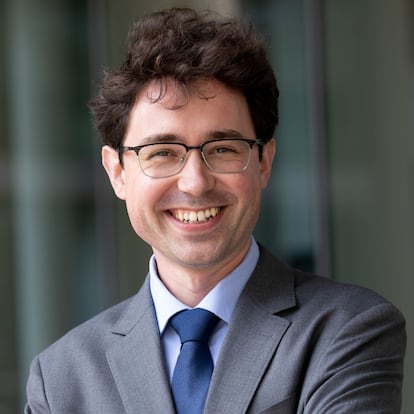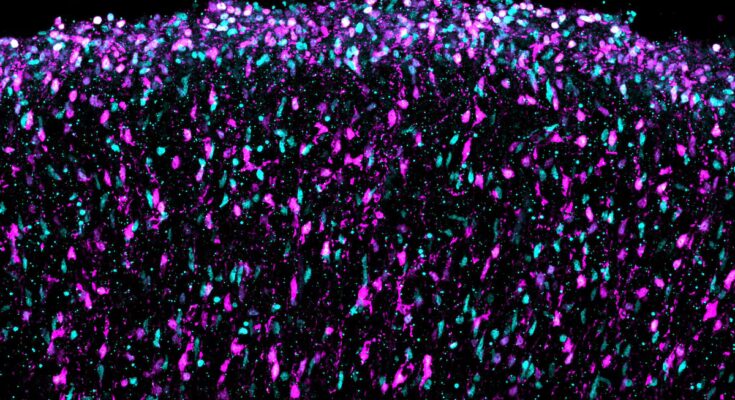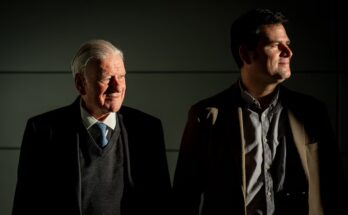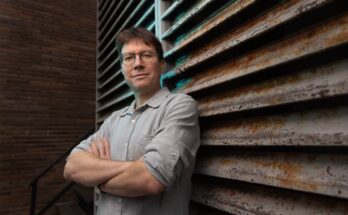Humanity observed the Moon with amazement, even terror because of its supposed evil influence, for millennia, until the Polish Johannes Hevelius, son of a wealthy brewer, built a homemade telescope in what is now Gdańsk and sat down every night to peer into that strange extraterrestrial world and draw it. In 1647 he published the first book of maps of the Moon. Neuroscientist Tomasz Nowakowski, 40, grew up in the same city as Hevelius and on Wednesday directs the first draft of the map of the brain in its developmental stage: from embryo to adult. The researcher says he feels like one of those pioneer cartographers. “The arrival of man on the Moon would not have happened if we had not had a map of the lunar surface. All the great progress and achievements in history began with the creation of precise maps,” he explains to EL PAÍS.
Nowakowski is one of the protagonists of the BRAIN Initiative to map the human brain, an American project launched by President Barack Obama in 2013 which already has a large budget of around 4.5 billion euros. “The brain, which gives rise to our thoughts, ideas and imaginations, remains the most important unexplored object. To understand it, we must start by understanding the list of its components,” says Nowakowski, of the University of California, San Francisco.
The task is monumental. During pregnancy, a single cell – the egg fertilized by the sperm – multiplies and, starting from the third week, the development of a rudimentary nervous system begins, culminating in a brain with 86,000 million neurons and trillions of connections between them. In this unimaginable choreography inside the fetal skull, some cells often take alternative paths. Nowakowski cites estimates that 15 percent of children and adolescents live with a neurodevelopmental disorder, such as autism, schizophrenia and attention deficit hyperactivity disorder.
An international consortium has now used the latest technologies, capable of analyzing which genes are active in each cell, to draw the first outline of a dynamic map of the developing brain. “Human tissues can be obtained from surgery or from the brain post-mortemwhich would normally be discarded. If cells are isolated from tissue quickly enough, they can be cultured in vitro for a few hours or, in some cases, for several days. This offers us a unique opportunity to study developmental processes in humans,” celebrates Nowakowski. So-called pluripotent stem cells, obtained from leftover embryos from fertility clinics or from reprogrammed adult cells, now also make it possible to imitate the first stages of creating a brain in the laboratory.
The new results represent a first step towards understanding at which specific moments in pregnancy the risk of developing a brain tumor or a neurodevelopmental anomaly is concentrated. The genes involved in disorders such as autism and schizophrenia, Nowakowski explains, are activated with greater intensity at the end of gestation, precisely in the phases that differ most from what happens in mice or other laboratory animals. It is essential to have your own atlas to understand how the labyrinth of the human brain is formed.
The brain contains thousands of subtypes of cells, highly specialized in their function: thought neurons, astrocytes that act as support, oligodendrocytes that function as an insulating layer of neuronal cables, microglia that clean the nervous system of waste. The consortium found that during fetal development, cells are extraordinarily flexible in terms of identity, allowing them to become other cell types in the adult brain. This flexibility is also its weak point. Researchers have identified a type of progenitor cell, present in the second trimester of pregnancy, that can generate both neurons and oligodendrocytes or astrocytes. And a brain cancer with no cure, glioblastoma, has cells similar to this progenitor, which offers a clue to the origin of this tumor.
The consortium, called the BRAIN Initiative Cellular Atlas Network, announces the results of half a dozen studies published in the journal on Wednesday Nature. The first sentence of his presentation text recalls the work of the Spaniard Santiago Ramón y Cajal, the man who, equipped with a microscope and chicken cerebellums, presented the first objective proof in 1888 in Barcelona that the nervous system is organized into single cells. “Almost all of modern neuroscience is based on the concepts proposed by Cajal,” says Nowakowski. “He was a visionary, even in aspects that we do not yet know how to study. I am convinced that his vision will continue to resonate for many years to come”, adds the University of California professor.
The Spanish neuroscientist Rafael Yuste was the originator of the BRAIN initiative. He says that, one day in September 2011, in the English villa of Chicheley Hall, he met two dozen experts in the brain or in the study of millionths of a millimeter structures, to talk about possible collaborations. Yuste got up and sparked a debate: he proposed analyzing all the neurons, one by one. Examining just a few, he claimed, was like trying to watch TV by looking at a single pixel. Among the voices who claimed that this was impossible, the American geneticist George Church, promoter of the project for reading human DNA since 1984, stood up and declared that, in science, “nothing is impossible”. The White House adopted the proposal and, in early 2013, Obama solemnly announced the project: “Humans can identify galaxies light years away, we can study particles smaller than an atom, but we still haven’t cracked the mystery of the pound and a half of matter between our ears.”
Yuste, a professor at Columbia University (USA), is enthusiastic about the latest results of the initiative. “This atlas of developing cell types is essential not only to scientifically understand how the brain develops, which is absolutely fascinating considering that it assembles itself and self-organizes without external instructions, but it is also fundamental information for understanding the alterations and pathologies that occur during pregnancy and in the early stages of life,” he celebrates. “These results demonstrate how sustained investments in the development and application of new methods are of crucial importance for science and medicine,” underlines Yuste, promoter of the future National Center of Neurotechnology (Spain Neurotech), in Madrid.

Two years ago, neuroscientist Hongkui Zeng’s team presented the most complete map of the adult mouse brain: a pea-sized organ with just 70 million neurons and 5,300 cell types. Zeng and his colleagues at the Allen Institute for Brain Sciences in Seattle have now focused on cells essential to the functioning of the nervous system: GABAergic inhibitory neurons, which act as a brake on the brain, slowing its activity to facilitate the transmission of information. These neurons, according to the researchers, continue to develop after birth, especially in regions of the brain involved in learning, emotions and decision-making. “This means there may be a longer period than previously thought to intervene and help the brain reorganize itself, especially in the case of children with developmental disorders,” the Allen Institute noted in a statement.
Neuroscientist Guillermina López Bendito speaks of “a qualitative leap” in her discipline. “Until now we had cell atlases, especially of adult brains, which provided a static vision of cellular identity. This collection of articles transforms that snapshot into a moving film: it reconstructs the temporal progression and cell lines that give rise to brain development”, explains the researcher from the Institute of Neuroscience of Alicante.
López Bendito runs a laboratory that seeks to understand the very dense network of connections between brain cells. He points out that the consortium, in which he did not participate, has outlined maps of different species of mammals, from mice to humans, identifying specific characteristics of humans and other primates, such as the longer duration of the generation period of new neurons and this diversification of the cerebral cortex after birth. “These temporal differences could underlie both human cognitive abilities and our increased vulnerability to genetic mutations or environmental alterations during development,” says the neuroscientist.
Santiago Ramón y Cajal, alone with his microscope, undertook in 1888 the impossible mission of mapping the brain, millimeter by millimeter. His work culminated in 1904 with the publication of Structure of the nervous system of humans and vertebratesa colossal work of 1,800 pages that contained a warning: “The perfect completion of the edifice of neurology will still require the labor of many centuries.” Tomasz Nowakowski is more optimistic. “I don’t think we are centuries, or even decades, away. I have been impressed by the speed with which artificial intelligence has advanced, especially in recent years, to emulate certain cognitive processes through computational models,” reflects the researcher. “I think we are rapidly approaching a point where theory and modeling will be able to make predictions about which cells and molecules are essential to the structure and function of the brain. And we will have the technologies needed to test those predictions,” he predicts.



